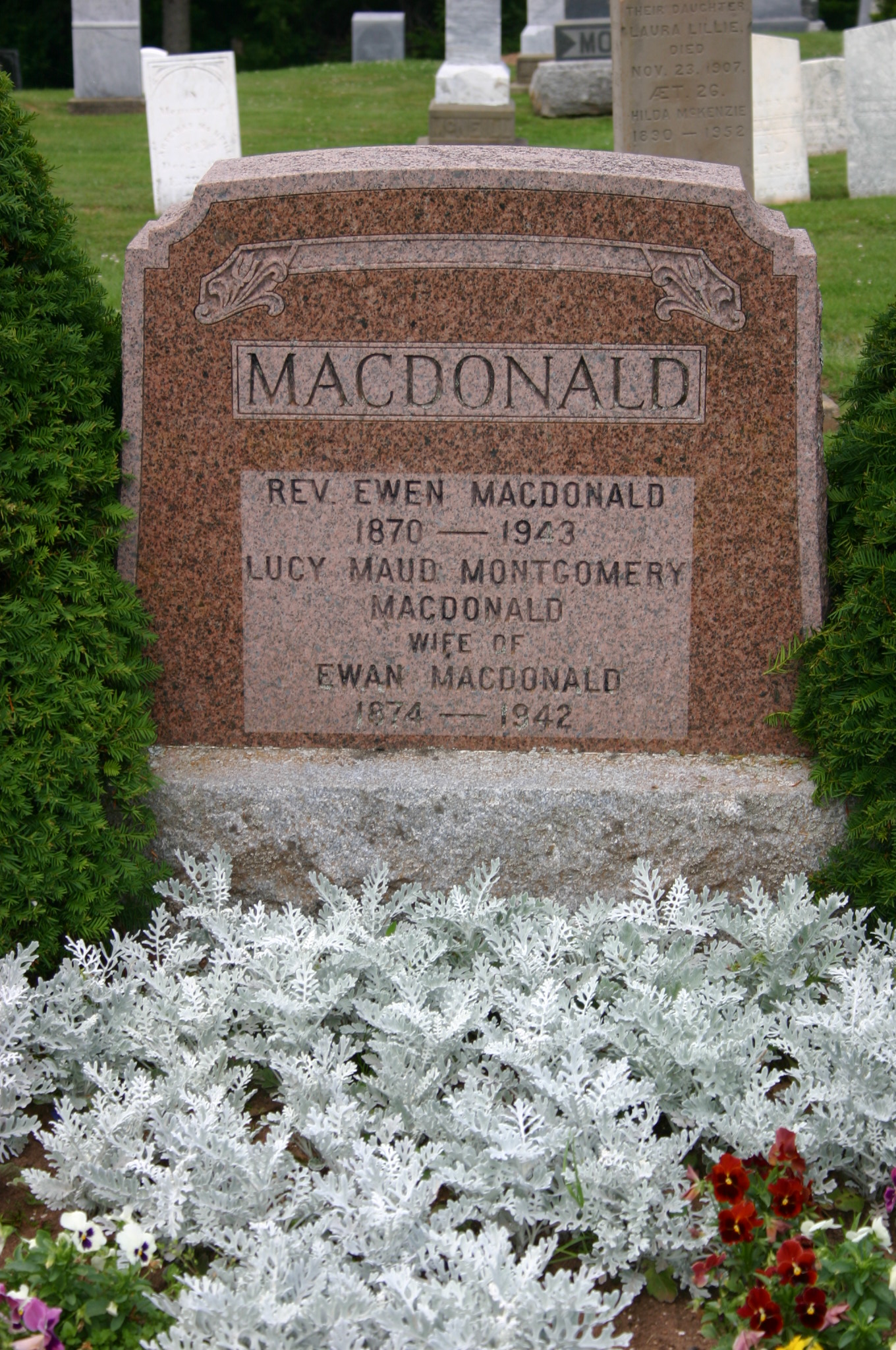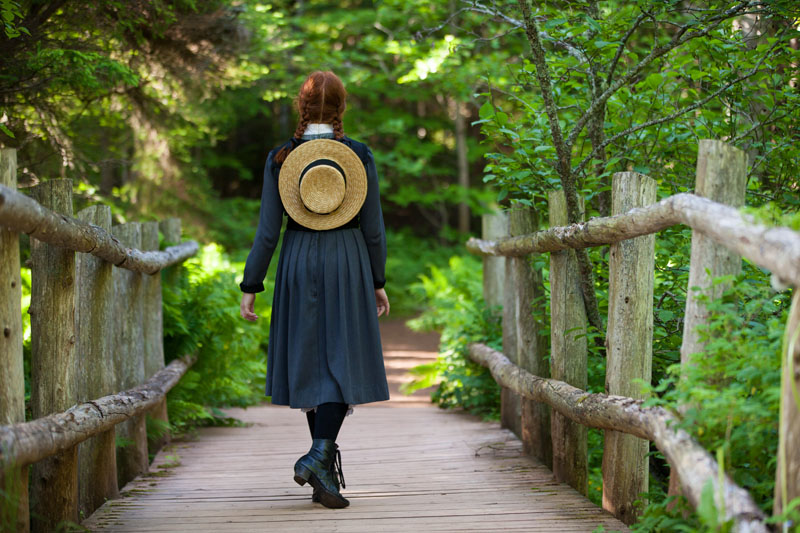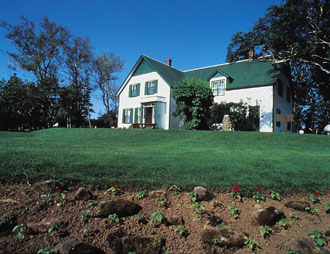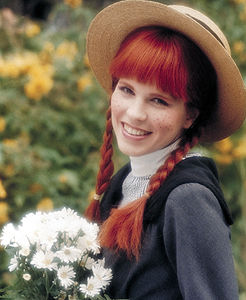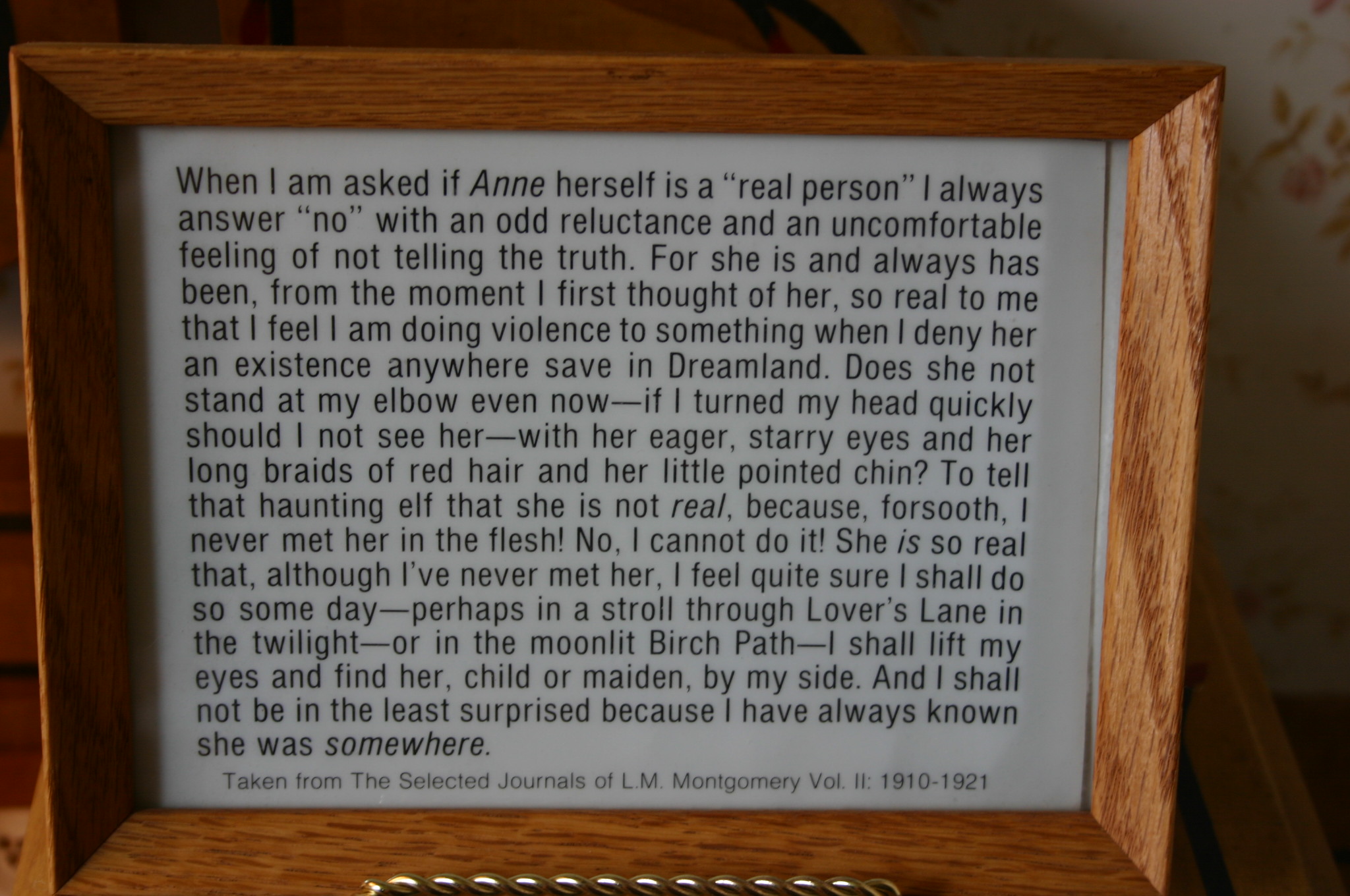Background
Montgomery taught in various Prince Edward Island village schools in the 1890s, but was soon earning enough from her writing that she spent the period between 1898 and 1911 living with her grandmother in Cavendish writing poems and stories for publication. She completed Anne of Green Gables, her first novel, in 1905. It was inspired by such children’s books as Little Women and Alice in Wonderland, and by a newspaper story Montgomery had read about an English couple who had arranged to adopt a boy but were sent a girl. The manuscript was rejected by every publisher she sent it to, so she gave up and kept it in a hat box until 1907, when she tried again and secured a publishing deal with L.C. Page in Boston.
This episode of The Secret Life of Canada looks into the life of Lucy Maud (L.M.) Montgomery, creator of iconic characters like Anne of Green Gables and Emily of New Moon. The lesser-known story is that of the writer herself, who had many struggles within her own life, especially with her mental health.
Note: The Secret Life of Canada is hosted and written by Falen Johnson and Leah Simone Bowen and is a CBC original podcast independent of The Canadian Encyclopedia.
Plot Synopsis
The first in a series of eight novels, Anne of Green Gables follows the adventures and misadventures of Anne Shirley, an intelligent, passionate and precocious orphan. At age 11, she is delivered from an orphanage to elderly siblings Matthew and Marilla Cuthbert, who were expecting a boy to work on their farm, Green Gables, in rural Prince Edward Island. As she makes her bright passage from childhood into adolescence, Anne finds ample “scope for the imagination” at Green Gables, where she wins the hearts of Matthew and Marilla, and in Avonlea, where she wins the community’s affection.

Reception and Popularity
Released in June 1908, the book sold more than 19,000 copies in its first five months and was re-printed ten times in its first year. It garnered widespread acclaim, including endorsements from Canadian poet Bliss Carman and American author Mark Twain, who called Anne “the dearest, most moving and delightful child since the immortal Alice.” By the end of the First World War, Lucy Maud Montgomery was a household name throughout the English-speaking world.
The universal appeal of Anne of Green Gables was also quickly apparent through its popularity in other cultures. By 1925, it had been translated into Swedish, Dutch, Polish, Norwegian, Finnish and French, and the English version had been reprinted so many times that the original publishing plates had to be replaced.
The book has enjoyed its highest degree of popularity outside Canada in two countries: Poland, where it was published in seven editions between the First and Second World Wars and was voted the fourth most popular book in a 1932 poll conducted by Ruch Pedagogiczny magazine (Anne of the Island, the third book in the Anne series, was even published by the Polish Army in Palestine during the Second World War); and Japan, where it resonated with an orphaned population following the war and has been a mandatory part of the public school curriculum since 1952.

Anne of Green Gables has remained in print for more than 100 years, and has never waned in popularity. Montgomery scholar Mary Rubio has called it “Canada’s most enduring literary export.”A 2003 BBC survey called The Big Read, which aimed to determine Britain’s best-loved novel, ranked Anne of Green Gables at No. 41, ahead of F. Scott Fitzgerald’s The Great Gatsby, George Orwell’s Animal Farm and Charles Dickens’s A Christmas Carol. In 2012, Anne was ranked No. 9 in a survey of children’s novels by the US-based School Library Journal, while a 2014 reader poll conducted by CBC Books declared Anne Shirley Canada’s most iconic fictional character.
Anne of Green Gables Series
The second novel of the Anne series, Anne of Avonlea (1909), features Anne at sixteen taking on her first teaching post in the one-room Avonlea schoolhouse. Having postponed her college aspirations to help Marilla with Green Gables, Anne vows to be a progressive and gentle teacher to her students, but is met with challenges to her ideals. Marilla finds herself adopting the orphaned twins of a distant relative, which brings chaos and misadventure to Green Gables. Amid all this, Anne finds time to meddle in the romantic lives of Avonlea villagers, and begins to see Gilbert Blythe in a new light.
Anne of the Island (1915), Montgomery’s third novel in the Anne series, follows Anne to Kingsport, Nova Scotia, where she attends Redmond College to earn her BA. Anne is courted by Roy Gardner, who seems at first to match her imagined ideal of a dark and brooding man, but Anne struggles to understand her feelings for Gilbert Blythe. While in Nova Scotia, Anne visits the fictional town of Bolingbroke and the home where she was born, and where her parents, Walter and Bertha Shirley died of a fever when she was three months old.

Anne of Windy Poplars (1936) is chronologically the fourth novel in the series, but was the seventh published. Written to fill gaps in time between the other novels, it consists largely of letters written by Anne to her future husband, Gilbert Blythe, who at this time is a medical student at Redmond College. The primary setting has moved from the fictional Avonlea to the town of Summerside, where Anne has taken the post of principal at Summerside High School. Here she encounters a new cast of characters, among them Summerside’s “Royal Family,” the Pringles, who conspire to sabotage her position, and Vice Principal Katherine Brooke, who lives a joyless life until Anne wins everyone over with her optimism and warmth.
Anne’s House of Dreams (1917) begins with the marriage of Anne Shirley and Gilbert Blythe, who is now a doctor. Anne’s new life sees her move from her beloved Green Gables and Avonlea to the far flung shores of Four Winds Harbor. Here Anne finds more kindred spirits in Captain Jim, Miss Cornelia Bryant and Leslie Moore, whose life is a series of tragedies until her friendship with Anne and Gilbert changes everything. In this novel, Anne enters a new stage in her life — motherhood, with all of its accompanying triumphs and tragedies.
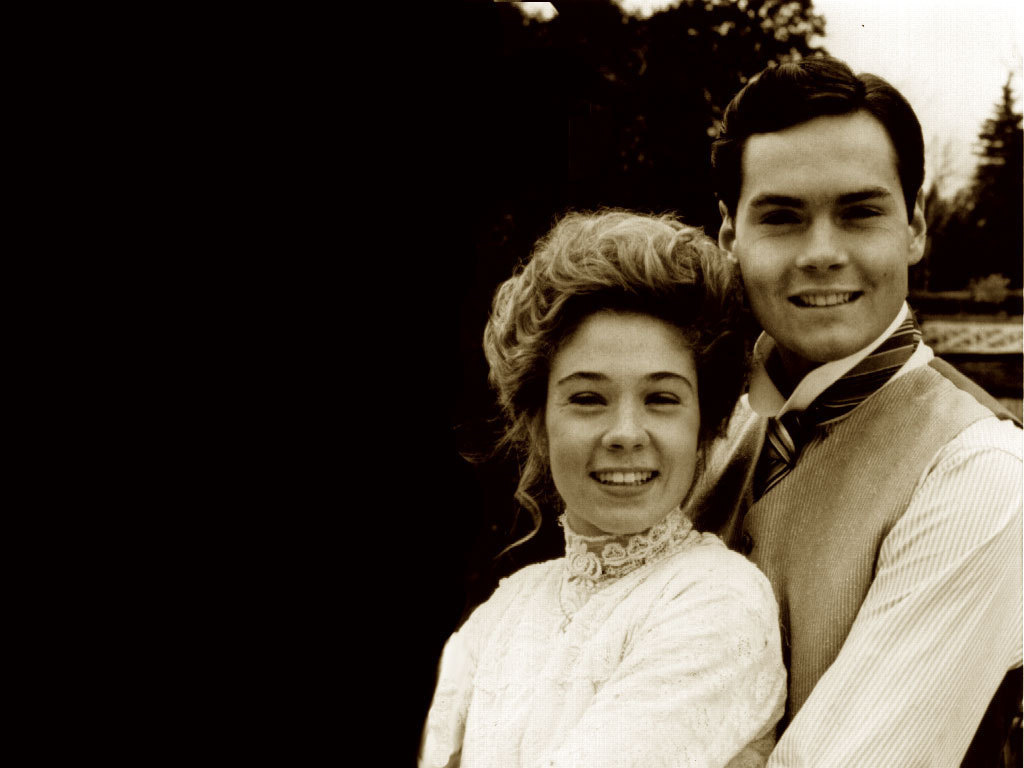
The sixth book of the series, Anne of Ingleside (1939), takes place several years after the fifth. Like Anne of Windy Poplars, Anne of Ingleside fills in gaps between other novels in the series. Anne is now the mother of five, with a sixth child on the way. Even as she shoulders greater responsibilities Anne remains irrepressible, delving into matchmaking, raising bright, imaginative children, and finding time to visit with her old friends in Avonlea. While this book is the sixth in the series chronologically, it was published eighth; it was in fact the last work published in Montgomery’s lifetime.
Rainbow Valley (1919) is the seventh book in the Anne series, and the first to focus primarily on Anne’s children, who possess all the spiritedness of Anne as a child. In this novel they befriend the Meredith children, whose father is Ingleside’s minister, and engage in all manner adventure and mischief. The novel’s ending hints at what’s to come in the series, as the winds of war begin to blow over Europe.
The final book in the series’ chronology, Rilla of Ingleside (1921) focuses on Anne and Gilbert’s youngest daughter, Rilla, who comes of age during the First World War. Along with Francis Marion Beynon’s Aleta Dey (1919), Rilla of Ingleside is one of the only Canadian novels about the First World War written from a woman’s perspective while the war was underway, and as such shines a unique light on the Homefront and the “women’s work” of that era (see also First World War in Canadian Literature). While her brothers fight in Europe, Rilla and her sisters work with the Red Cross, and Rilla raises a war orphan. The family, like the country at the time, awaits news from the front, and Anne observes the ways in which war forces children to grow up too quickly.
The Blythes are Quoted, the final book to feature Anne, was written shortly before Montgomery’s death in 1942 and delivered to her publishers on the morning of her death. The book is made up of short stories, poems attributed to Anne and her son Walter, and vignettes of characters discussing her poems. Most of the stories only feature Anne and her family incidentally, which some suggest was to win over fans of the Green Gables series. The book was significantly abridged and published in 1974 as The Road to Yesterday. The full manuscript was discovered in 1999 and published as The Blythes are Quoted in 2009.
Outside of the narrative series, Anne and her family also appeared in the short story collections Chronicles of Avonlea (1912) and Further Chronicles of Avonlea (1920).
Adaptations

Anne of Green Gables has been adapted more than two dozen times, including twice as a Hollywood feature (a silent film in 1919 and a talkie in 1934) and twice as a BBC miniseries (in 1952 and 1972). It was adapted into a musical for CBC TV by Don Harron, Norman Campbell and Phil Nimmons in 1956, with a second production airing in 1958. In 1965, Harron, Campbell and Mavor Moore expanded the TV version into a full-length musical for the Charlottetown Festival. Anne of Green Gables: The MusicalTMpremiered at Charlottetown’s Confederation Centre of the Arts on 27 July 1965 and has played there every year since, earning the Guinness World Record for “longest running annual musical theatre production.”

However, the best-known adaptation of Anne of Green Gables is Kevin Sullivan’s 1985 CBC TV production starring Megan Follows, Colleen Dewhurst, Richard Farnsworth and Jonathan Crombie, which went on to win nine Gemini Awards, an Emmy Award and a Peabody Award. The initial broadcast of the miniseries was the highest-rated television drama in Canadian history, with Part 1 drawing 4.9 million viewers and Part 2 attracting 5.2 million — the largest audience for non-hockey broadcasts in CBC history. Its success led to three sequels, all produced by Sullivan: Anne of Green Gables: The Sequel (1986) and Anne of Green Gables: The Continuing Story (2000), both featuring the same cast and produced by CBC; and Anne of Green Gables: A new Beginning (2008), produced by CTV and starring Barbara Hershey as a middle-aged Anne. (The last two of Sullivan’s television adaptations are a complete departure from the Green Gables series, featuring characters from Montgomery’s works but entirely different plots.)
Sullivan also produced an animated adaptation for American public broadcaster PBS in 2000, while two successful animated versions of Green Gables have also been produced in Japan, one in 1979 and the other in 2010. PBS produced a trio of TV movie adaptations co-starring Martin Sheen as Matthew Cuthbert: Anne of Green Gables (2016), Fire & Dew (2017) and The Good Stars (2017). In 2016, Rachel McAdams narrated an audiobook of Anne of Green Gables for audible.com.
The CBC also produced the widely acclaimed Anne with an E (2017), a somewhat darker take on the story. It starred Amybeth McNulty, Geraldine James and R.H. Thomson and was available internationally through Netflix. With an opening theme song by the Tragically Hip (“Ahead By a Century”) and the introduction of LGBTQ, Black and Indigenous storylines, the series expanded the world of Avonlea and connected with a new generation of viewers. According to the show’s creator, three-time Emmy Award winner Moira Walley-Beckett: “It’s always been a concern to me that L.M. Montgomery’s world of Avonlea is such a white world when in fact it doesn’t really accurately reflect the diversity that Canada was and is.” She shared in a September 2019 interview that her “master plan” from the outset was to “find a way to genuinely and legitimately reflect the diversity of the nation.”
Although the series was divisive for fans of the original novel, it received critical praise and a total of eight Canadian Screen Awards, including best drama in 2018 and 2019. In November 2019, it was announced that the series would be cancelled after three seasons. This prompted fans to petition Netflix to renew the series with the social media hashtag #RenewAnneWithAnE.
Licensing and Legal Disputes
Montgomery’s contract with her first publisher, L.C. Page, required her to produce two sequels to Anne of Green Gables: Anne of Avonlea (1909) and Anne of the Island (1915). Montgomery did not significantly profit from the sale of her first books, particularly from Anne of Green Gables. The royalties she was assigned in her first contract with Page were small, and the profits pertaining to licensing and reprints, including the fees for the first two cinematic adaptations of the novel in 1919 and 1934, remained for the most part with the publisher.
In 1920, although Montgomery had not renewed her contract with him, Page published a collection of short stories, Further Chronicles of Avonlea, still in his possession. A lawsuit ensued, more or less concluding Montgomery’s relationship with Page, who by this time held the rights to her first six books, including Anne of Green Gables. Montgomery shifted to Canadian publishers McClelland and Stewart and American publishers Frederick Stokes in 1917, and in the ensuing decade engaged in a series of bitter lawsuits and countersuits with Page over royalties and rights.
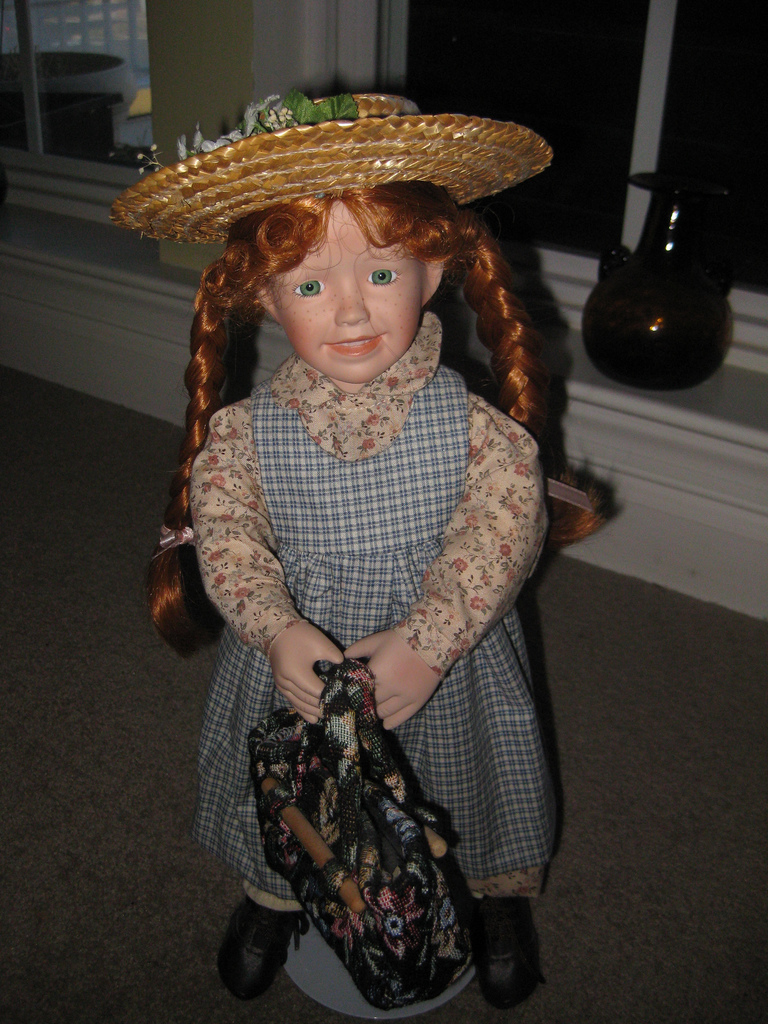
In the decades since Montgomery’s death, a thriving industry consisting of television series, stage productions, and Anne-related commodities such as souvenirs and dolls has flourished, as has the steady popularity of Montgomery’s books. All licensing rights for Anne of Green Gables are held jointly by Montgomery’s heirs and the province of Prince Edward Island through the Anne of Green Gables Licensing Authority Inc. Montgomery`s granddaughter Kate Macdonald Butler acts as chief administrator of the licensing, broadcasting and merchandising rights to Anne of Green Gables, which are highly profitable and have been the subject of numerous legal disputes over the years.
In 1999, Macdonald Butler and Montgomery’s daughter-in-law, Ruth Macdonald, publically disclosed that they had been engaged in a decade-long legal battle with producer-director Kevin Sullivan over royalties from the Anne of Green Gables miniseries and its sequel. Though the family had received $425,000 for the exclusive rights to produce the miniseries and another $100,000 to produce the sequel in 1986, they had not received 10 per cent of the profits or been permitted to audit Sullivan Entertainment’s books, as contractually agreed, despite more than 40 attempts.
Sullivan claimed that his company had not made a profit from either miniseries, and had actually sued several PBS stations in the US for unpaid broadcasting fees in the early 1990s. He responded to the public condemnation by launching a $55 million defamation suit against the heirs. The suit was dismissed by the Ontario Superior Court in 2004. In her ruling, the judge described Sullivan Entertainment’s bookkeeping as “creative accounting at its very best and very worst — depending on your perspective.”
In 2000, after a five-year legal battle, the Ontario Superior Court ruled that a Richmond Hill, Ontario company violated its licensing agreement with the Montgomery estate in the production of Anne of Green Gables merchandise. The company was ordered to cease production and to pay the estate and the province of PEI more than $1 million in royalties and damages.
Honours and Tributes

Montgomery and her characters achieved a level of fame in her lifetime that was unprecedented in Canadian fiction and only continued to grow following her death. The character of Anne Shirley became such an iconic symbol of wholesome, youthful independence that, after portraying her in the 1934 Hollywood adaptation of Anne of Green Gables, the child star Dawn Evelyeen Paris changed her stage name from Dawn O’Day to Anne Shirley. She enjoyed a successful career under that moniker, receiving an Academy Award nomination in 1938 and a star on the Hollywood Walk of Fame in 1960.
Numerous institutions and organizations around the world are also named after Anne Shirley or Green Gables, including The School of Green Gables, a nursing school in Okayama, Japan, and a plethora of beach houses and tea houses in countries around the world. Canada Post issued stamps in honour of Montgomery and Anne of Green Gables in 1975 and again in 2008, in commemoration of the novel’s centennial. In 2016, the Bank of Canada included Montgomery in a long list of 12 candidates to become the first Canadian woman to be featured alone on Canadian currency (see Women on Canadian Banknotes).
Heritage Sites and Landmarks
Although Montgomery maintained that she wanted to preserve a clear separation between her fiction and her life, the two have come to be inextricably entwined via the various heritage and tourist sites associated with Montgomery and her work. Thousands of tourists visit Prince Edward Island each year to see the “sacred sites” related to the writing of Montgomery’s book and to its imaginative landscape. The Green Gables area around her Cavendish home in PEI was made open to the public in 1985 and named a National Historic Sites by the federal government in 2004.

In 1983, the City of Toronto named a park near Montgomery’s Toronto home in her honour. In 2017, the manse in Norval, Ontario, where Montgomery lived with her family between 1926 and 1935 was purchased by the Heritage Foundation of Halton Hills. It plans to turn the home into a museum.
Feminist Icon
Beginning in the 1970s, second-wave feminists such as Margaret Atwood began to champion Montgomery’s literature as more than mere children’s fiction or genre writing. Montgomery and especially Anne Shirley came to be seen as feminist heroes ahead of their time, emblematic of a movement before there was a name for it. As the Guardian’s Jean Hannah Edelstein wrote in 2009, “It’s never stated explicitly, but Anne is definitely a feminist, and being a feminist in early 20th century Canada is a difficult path to follow.” Moira Walley-Beckett, executive producer of the 2017 adaptation Anne, told the CBC that “Anne’s issues are contemporary issues: feminism, prejudice, bullying and a desire to belong.” In 2016, Slate declared Anne “a patron saint of female outsiders.”
Artistic and Critical Legacy
Montgomery experienced considerable artistic anxiety early in her career and throughout her life. She felt that her work was perceived to be less literary and less modern than the writing of many of her contemporaries, something even her extraordinary international popularity did little to assuage. Despite that, Anne of Green Gables has increasingly become the focus of critical and scholarly attention. The publication of the first of Montgomery’s journals in 1985 (edited by Mary Rubio and Elizabeth Waterston) revealed the mature, complicated and sometimes troubled mind of the author, and encouraged deeper analysis and complex interpretations of her fiction.
In 1993, the University of Prince Edward Island founded the L.M. Montgomery Institute, which hosts the biennial International L.M. Montgomery Conference. The event attracts hundreds of academics and fans from around the world and has resulted in the publication of numerous essays, dissertations and collections analyzing Montgomery’s work. Her handwritten journals and scrapbooks, along with original manuscripts, photographs and personal effects are held at the University of Guelph’s L.M. Montgomery Research Centre.

 Share on Facebook
Share on Facebook Share on X
Share on X Share by Email
Share by Email Share on Google Classroom
Share on Google Classroom

